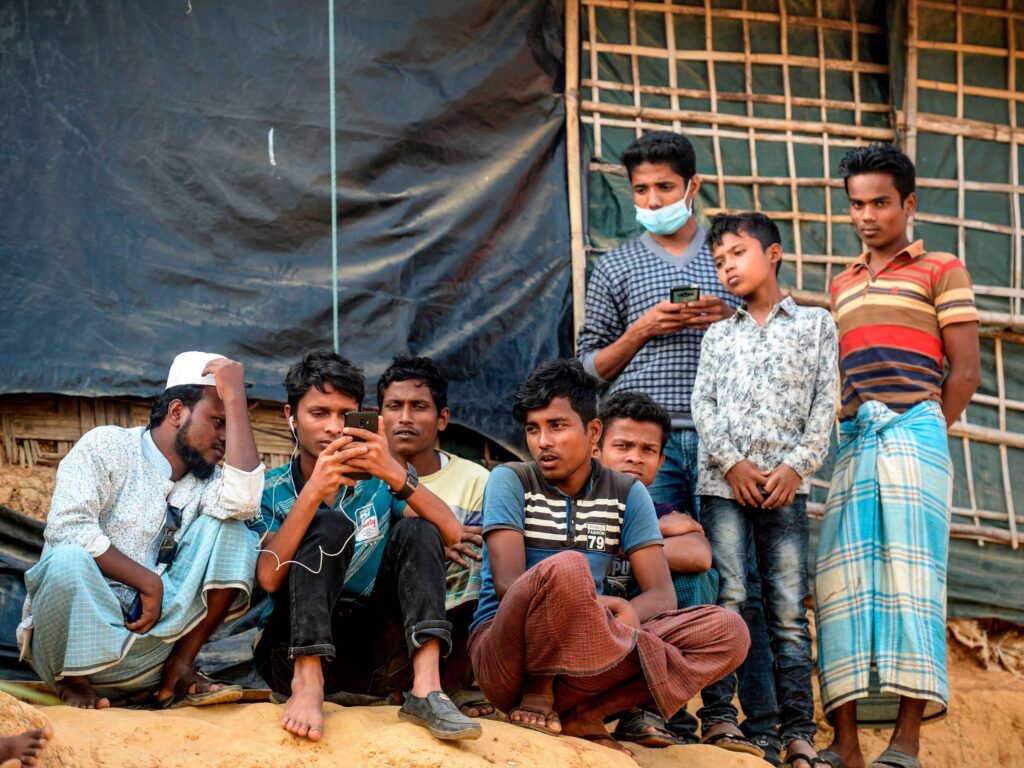
Mobile apps have become an increasingly important tool in the field of humanitarian aid, allowing aid organizations to more effectively respond to crises and provide assistance to those in need.
According to a UN report, “Mobile technology is revolutionizing the way humanitarian aid is delivered. The speed, reach and cost-effectiveness of mobile networks make them a powerful tool for getting information to people in need and for coordinating responses to crises.” The report cites several examples of mobile apps that have been used to great effect in humanitarian aid, including “mHero,” a platform for connecting health workers in remote areas with medical experts, and “Ushahidi,” a platform for crowdsourcing crisis information.
One major advantage of mobile apps in humanitarian aid is their ability to quickly and efficiently disseminate information. For example, the World Food Programme’s “ShareTheMeal” app allows individuals to make small donations to provide meals for schoolchildren in need. The app has been used to provide over 20 million meals to children in developing countries.
Another advantage of mobile apps is their ability to help with logistics and coordination. The International Committee of the Red Cross (ICRC) has developed an app called “Telemed,” which allows doctors in the field to consult with specialists in real time and to access medical information remotely. This allows for more efficient and effective medical care in crisis situations.
Mobile apps have also been used to help with the tracking of aid distribution. A study published in the Journal of Humanitarian Logistics and Supply Chain Management found that a mobile app called “AidLink,” which was used to track aid distribution in the aftermath of a natural disaster, improved the transparency and accountability of aid delivery.
However, despite the many benefits of mobile apps in humanitarian aid, there are also challenges to be addressed. For example, a study by the Harvard Humanitarian Initiative found that mobile apps can be difficult to use in low-resource settings, and that there is a lack of standardization in the field. Additionally, there are concerns about data privacy and security in the use of mobile apps in humanitarian aid.
The Syrian refugee crisis in Greece has also seen the use and development of mobile apps to aid in the humanitarian response. One example is the “Refugee.info” app, developed by the International Organization for Migration (IOM) in partnership with the United Nations High Commissioner for Refugees (UNHCR). The app provides refugees with information on services and assistance available to them, including information on healthcare, education, and legal assistance. The app is available in several languages and can be used offline, making it particularly useful for refugees in remote locations.
Another example is the “Refugee Aid App” developed by a team of volunteers, provides real-time information on the location and availability of aid, such as food and shelter. This app also allows volunteers and organizations to coordinate their efforts and ensure that aid is distributed efficiently.
In addition, mobile apps have also been used to help refugees navigate the often-complex and overwhelming bureaucracy they encounter in Greece. For example, the “Migreat!” app provides information and assistance with the asylum application process, and the “Eures-Refugees” app connects refugees with job opportunities.
These examples show how mobile apps can play a vital role in providing information, assistance, and coordination during crisis and refugee crisis such as the Syrian refugee crisis in Greece. It also highlights the importance of continued development and collaboration between humanitarian organizations, volunteers, and tech developers to create effective and accessible mobile apps for crisis response.
Connectivity is essential for the full benefit of mobile apps in humanitarian aid, as it allows for the efficient dissemination of information and coordination of efforts. Without connectivity, mobile apps are limited in their ability to provide assistance and aid to those in need.
During the Syrian refugee crisis in Greece, many refugees were living in remote areas with limited or no connectivity, making it difficult for them to access information and assistance through mobile apps. This highlights the importance of ensuring that connectivity is available in crisis-affected areas in order for mobile apps to be fully effective.
Additionally, in order for mobile apps to be truly beneficial for humanitarian aid, it is important that they are designed to work offline as well. This ensures that the apps can still be used even in areas with limited connectivity, and that the information and assistance provided is still accessible to those who need it most.
In order to ensure that mobile apps are effective in humanitarian aid, it is essential to consider the availability of connectivity and to design apps that can work offline in crisis-affected areas.
Mobile apps have proven to be a valuable tool in the field of humanitarian aid, allowing for more efficient and effective assistance to those in need. However, there are still challenges to be addressed in terms of usability and data privacy. Further research and development is needed to ensure that mobile apps are used to their full potential in the humanitarian aid sector.
References:
- United Nations, “Mobile Technology for Humanitarian Action” (Report, 2016)
- World Food Programme, “ShareTheMeal” (App, 2017)
- International Committee of the Red Cross, “Telemed” (App, 2015)
- Journal of Humanitarian Logistics and Supply Chain Management, “Using mobile apps to improve aid transparency and accountability: a case study of AidLink” (Study, 2018)
- Harvard Humanitarian Initiative, “Mobile technology in humanitarian response: a review of the literature” (Study, 2016)